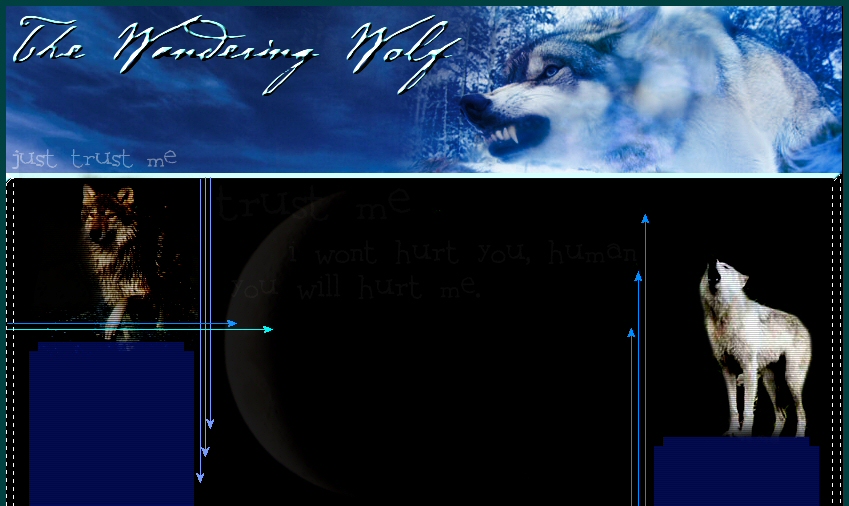

.: The Wolves :.
.: WSC Animals :.
.: The Cub :.
.: The Handwriting
.: My ABCs
.: The Basics
.: Googlism of Jade
.: The Pictures
.: The Pets
.: The Quizzes
.: The Art
.: Sister Sites :.

.: The Site :.
.: For A Wanderer
.: Competition :.
.: Contact :.
.: North American Raccoon :.

Geographic Range: North and Central America. Its range is gradually expanding northward as land is cleared for agriculture. It was successfully introduced into Germany what was the Soviet Union.
Status: Extremely common
Length: 24 - 38 inches body length. Tail is 8 - 16 inches.
Weight: 15 - 44 pounds. Northern raccoons are generally larger than those in the south (Bergmann's Rule of clinal variation). Males are generally 25% larger than females.
Description: Distinctive mask and 5-10 rings on tail. Long, dense cota is gray-black. 5 toes are non-webbed with non-retractable nails. Soles of feet are hairless. Front feet are adapted to seizing and handling objects, back feet are designed for support. Back feet can rotate 45 degrees. The eyes are black.
Habitat: Diverse, as long as water, food and shelter are provided. The best habitats are hardwood swamps, floodplain forests, saltwater marshes and farmland. On prairies, raccoons are most abundant in woodlot and wetland areas. Also common in cities. Movements and home ranges depend on habitat, food supply, and population density. There is a little evidence of territoriality, especially in urban areas.
Typical Diet: Omnivorous - invertebrates and insects make up majority of diet in spring. Also, crayfish, muskrats, squirrels, eggs and clams. Summer diets include fruits and nuts - wild cherries, gooseberries, edlerberries, strawberries and garden items. Also, frogs, fish, grubs, grasshoppers, worms, crickets and snails. The fall must be accumulated. Corn is a mainstay. Also, acorns, beechnuts, hazelnuts, and grapes are consumed. The nests of insects are raided for larvae.
Similar Species: Coatimundi, Kinkajou, Ringtail and Red Panda
Life Span: In the wild about 3 - 5 years. 12 - 16 years in captivity
Special Notes:
- Pro (Gr) means before; kuon (Gr) a dog; lotor (New L) a washer
- In northern latitudes (northern US and southern Canada), mating occurs in late winter and early spring, January - March. Birth of offspring peaks in May. Year-round breeding has been recorded for raccoons in southern areas.
- Male raccoons are polygamous. Females are monogamous. Juvenile females often breed during their first year. Juvenile males, usually don't have the oppurtunity to mate until their second year because of competition from adult males.
- Litter sizes tend to be larger in northern parts of their range. 3-7 young per litter
- Gestation period is 63 days
- Raccoons are born without teeth and eyes closed. They weigh about 75g (0.16pounds). Eyes open at 2 weeks, teeth erupt at 19 days By 10 days they are showing the facial mask and color patterns.
- The young remain in the den for about 8 weeks and then leave to forage with the female. They are fully weaned around 2 months into their life.
- The adult male plays no role in rearing young.
- The family unit (female with her young) are sociable and stay together until her next litter.
- Juvenile males often disperse from the adult females' home range.
- Fat is built up over the entire body in the fall to prepare for denning, and may be 2.5 cm thick. By late fall, 1/2 the animal's total body weight may be fat.
- Raccoons den in hollow trees, stumps, logs, caves or buildings.
- Communal dens of up to 23 raccoons have been reported.
- Raccoon predators include bobcats, mountain lions, foxes, dogs, wolves, great horned owls and fishers.